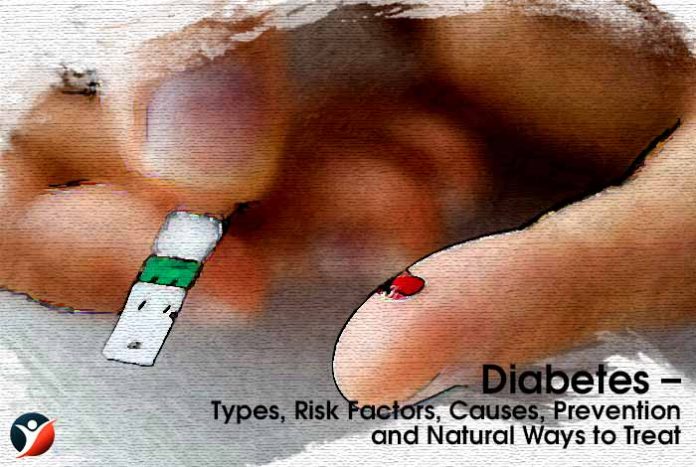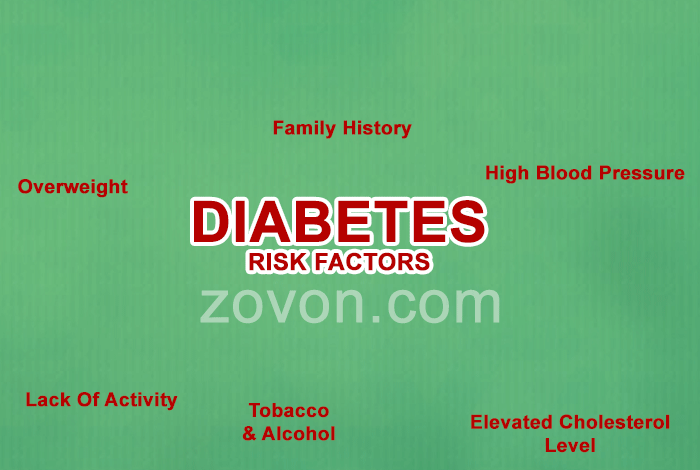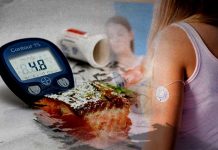
Overview and Facts:
Diabetes has emerged as a global epidemic in the modern times. Its history dates to 1500 BC with its mention in the Ebers Papyrus – an ancient medical document of Egyptian origin – as a disease, which causes frequent urination and weight loss. Later, the term “Diabetes” was coined by Apollonius of Memphis, a Greek physician, in around 250 BC.
Today, the prevalence of this chronic, non-communicable disease is increasing at a very high rate. This points towards a more sedentary lifestyle increased life expectancy and increase in obesity cases. India, today, has emerged as the ‘pDiabetes Capital of the World’, followed closely by China, the United States, Russia, Germany and Japan.
Diabetes is a condition in which blood glucose level rises higher than normal. Body cells utilize glucose as a form of energy. Insulin – a type of hormone – helps cells to absorb the glucose from the bloodstream; thereby, bringing down the blood sugar levels. The cells begin to ignore insulin and refuse to absorb sugar from the blood, causing blood glucose to rise to unhealthy levels.
The World Health Organization (WHO) defines this epidemic condition as a chronic disease, which occurs due to inadequate production of insulin, or when the body is unable to effectively utilize it.[1] Produced by pancreas gland inside the body, insulin is responsible for regulating the metabolism of carbohydrates, fats and proteins in the body. It facilitates absorption of glucose from blood into liver, fat and skeletal muscles, and converting it into glycogen through a process, known as glyconeogenesis. Unregulated insulin levels in the body lead to increased blood sugar levels, also known as hyperglycemia.
- The number of patients diagnosed with diabetes has quadrupled since 1980s.
According to the International Diabetes Federation, around 382 million people in the world are suffering from diabetes, and the count is expected to increase to 592 million by 2035. - Currently, 1 in 11 adults is suffering from this condition.
- Lower- and middle-income groups are the most prone to be affected by diabetes.
- About 245 billion USD is being spent by the US government in disease management, directly or indirectly.
Types and Symptoms of Diabetes
Types of Diabetes:
- Type I
- Type II
- Gestational diabetes
A. Type I Diabetes:

It is a severe form of diabetes, also known as ‘Insulin-dependent diabetes’ or ‘Juvenile diabetes‘, as it generally affects juveniles and children. However, Type I Diabetes may develop at any age. In this type, the body’s immune system attacks its own insulin-producing pancreatic cells, and so, the body produces little or no insulin. Insulin acts as a key to unlock the cells to absorb glucose from the bloodstream. In the absence of the key, the cells are not able to utilize the glucose from the bloodstream, where the unabsorbed glucose starts to accumulate. This causes cells to starve for glucose with extremely high levels of glucose in the bloodstream. Patients require insulin injections throughout their lives to maintain normal blood sugar levels. Patients are also required to maintain proper blood-glucose levels by following a routine-based diet and carrying out regular blood glucose tests.
Juvenile Diabetes amounts to approximately 10% of the total diabetes cases in North America and Europe. It is often accompanied by ketosis.
The non-regulated glucose levels in the blood can damage eyes, kidneys, nerves and heart. More severe stages of this condition can lead to coma and even death.
Symptoms of Type I Diabetes:
The common symptoms of diabetes can be described as 4Ts:
1.Toilet
- Excessive urination, especially at night along with bedwetting
2.Thirsty
- Unusually high levels of thirst
3.Tired
- Difficulty carrying out normal physical activities
4.Thinner
- Body starts breaking down fat and muscle into ketones as alternate sources of energy; causing loss in body weight and muscle mass.
Other symptoms that may accompany the above-mentioned ones are:
- Itchiness in genitals
- Blurred vision
- Unexpected cramps
- Skin infections
Serious medical attention is required if the symptoms of diabetes are accompanied with the following:
- Serious loss of appetite
- Nausea
- Rise in body temperature
- Stomach ache
- Fruity breath
The above symptoms can be the manifestations of a serious form of Diabetes, known as Diabetes Ketoacidosis, which can be life-threatening if medical attention is not given immediately.

B. Type II Diabetes:

Type II diabetes is the most common type of diabetes in which blood glucose can’t be regulated. Cells become resistant to the insulin produced by the body due to which it cannot utilize glucose. The demands for insulin increase to facilitate entry of glucose into the cells, whereas high levels of glucose remain in the blood. With time, the cells require more and more amount of insulin, which the pancreas fails to produce.
Diabetic patients with persistently high blood glucose levels in the body are at a risk of developing Diabetic Neuropathy. This condition is characterized by nerve damage that leads to pain. In most cases, this pain is mild. There are two types of diabetic neuropathy, viz., autonomic and peripheral. In peripheral neuropathy, the patient experiences pain in feet and legs and in rare conditions, pain in arms as well as abdomen and back pain may occur. In abdominal neuropathy, digestive system, vascular system, urinary system and sex organs are the most affected ones.
Type II can be managed by taking care of the diet, regular exercise and by maintaining a healthy weight. Advanced cases may also require medications and insulin therapy apart from lifestyle changes to keep diabetes in check. A study by University of California, Los Angeles (UCLA) says that consuming coffee sometimes can work.
Symptoms of Type II Diabetes:
1. Increased thirst and frequent urination
2.Increased appetite
3.Weight loss
4. Fatigue
5. Blurred vision
6. Frequent infections
7. Patches of darkened skin
C. Gestational Diabetes:

Gestational diabetes [2] is a type of diabetes that develops during pregnancy. It results in increased levels of glucose in the blood, which can affect the pregnancy and the baby. It usually goes away after the baby is born.
When pregnancy happens, a mother’s body naturally becomes resistant to insulin to provide more glucose to the developing baby. Generally, this does not pose any problem. When the body needs additional insulin to process excess insulin in the bloodstream, pancreas secretes insulin in the body.
However, if the pancreas is unable to keep up with the demands of insulin, blood sugar level increases in the blood. This causes gestational diabetes.
Developing gestational diabetes disposes the mother to develop Type II diabetes later in life. The newly born baby is also at a risk, immediately after birth, of developing low blood sugar levels.
Symptoms of Gestational Diabetes:
For most women, gestational diabetes does not produce any apparent symptoms. The primary health caregivers evaluate the would-be mother’s risk of developing gestational diabetes as a part of prenatal care.
Risk Factors of Diabetes

The risk factors for developing diabetes are manifold with obesity being the major one.
1. Risk Factors of Type I Diabetes:
This generally starts in childhood when the pancreas stops producing insulin. The patient has to live with this condition throughout his life. Factors that may predispose a person to develop type I diabetes are:
- Family history
- Diseased pancreas
- Infection or illness
2. Risk Factors of Type II Diabetes:
This is insulin-resistant diabetes, which usually affects adults, but can develop during any phase of life. Factors that may put a person at a high risk to develop type II diabetes include:
- Obesity
- Impaired glucose tolerance or Prediabetes
- Resistance to insulin
- Ethnicity
- History of gestational diabetes
- Lack of exercise
- Family history
- Women having PCOS
- Age
3. Risk Factors of Gestational Diabetes:
- Obesity
- Intolerance to glucose
- Genetic predisposition
- Age
- Ethnicity
Do I Have Diabetes?
Many people fail to identify if they have diabetes in the early stages when symptoms are not present. The symptoms are so mild that it can only be identified through blood tests.
Early screening of people at a high risk of developing this disease is recommended to avoid complications like chronic hyperglycemia, and long-term damage to eyes, kidneys, heart, nerves and so forth. People with undiagnosed diabetes have a high risk of stroke, coronary heart diseases and peripheral vascular disease in which there is narrowing, spasming or blocking of blood vessels outside the heart and brain. Patients with diabetes are also known to have abnormal cholesterol, high blood pressure and obesity.
The American Diabetes Association (ADA) [3] recommends that people aged 45 years and above should have regular screening for diabetes at every three years. People, who are at a higher risk of developing this chronic disease should opt for more frequent screenings, starting early in life. According to the U.S. Preventive Services Task Force, adults with high blood pressure or high cholesterol should be screened for type II diabetes to decrease the risk of cardiovascular disease.
Even if the screening test for diabetes comes out to be negative, regular follow-ups must be undertaken. Furthermore, risks of developing diabetes should be lowered by maintaining a healthy weight, keeping blood pressure and lipids under control and regular exercise.
Causes and Prevention of Diabetes
A. Causes of Diabetes:
There are a plethora of factors that cause diabetes, such as genetic makeup, family history, ethnicity, health and environmental factors. However, there is no single cause that fits every type of diabetes, because it greatly varies on the basis of individual and type.
i. Type I Diabetes:
It occurs when the body’s immune system destroys the pancreatic cells responsible for synthesizing insulin. The body is left without enough insulin to function normally. Such a response from the immune system is termed as “autoimmune reaction.” Genetic makeup may predispose a person to develop type I diabetes.
Some of the factors that can trigger the development of type I diabetes are:
- Viral or bacterial infection
- Chemical toxins within food
- Unknown factors causing autoimmune reaction
ii. Type II Diabetes:
There are a number of factors that contribute to the development of type II diabetes, with family history being the most common one.
The common factors include:
- Obesity
- Sedentary lifestyles
- Age
- Diet
- Gestational diabetes
iii. Gestational Diabetes:
Risk factors that increase the chances of developing gestational diabetes include:
- Family history
- Obesity
- Polycystic ovary syndrome in mothers
- Weight of baby being more than 9lb
- Ethnicity
Other causes of diabetes include:
1. Pancreatitis and Pancreatectomy:
Pancreatitis is the inflammation of pancreas, which can be very painful in the short term and can lead to secondary diabetes. According to NHS, half of the people, who develop pancreatitis are at a high risk of developing diabetes. Pancreatitis affects the amount of insulin produced in the body, and the patient might require insulin injections to keep his blood glucose levels in check.
Pancreatectomy is the surgical removal of all or parts of pancreas. Patients with pancreatectomy instantly develop type I diabetes.
2. Polycystic Ovary Syndrome:
PCOS in women makes them susceptible to obesity-linked insulin resistance that might eventually lead to prediabetes and type II diabetes.
3. Cushing’s syndrome:
In this condition, there is an increase in the level of cortisol, which ultimately increases glucose levels in the blood. Hence, diabetes occurs as a secondary symptom to Cushing’s syndrome.
4. Glucagonoma:
Glucagonoma is a rare condition in which there is a development of tumor in the alpha cells of pancreas, which leads to overproduction of the hormone, glucagon. Glucagon also helps regulate blood glucose levels. Glucagonoma results in the development of diabetes-like symptoms including:
- Hyperglycemia
- Excessive thirst
- Nocturnal polyuria or excessive night urination
- Diarrhea
- Skin rashes or dermatitis often on the face, belly, buttocks and feet that are crusty or filled with pus
- Excess weight loss
- Blood clot in the legs, known as deep vein thrombosis
5. Steroid diabetes:
This is a rare form of diabetes that occurs due to prolonged use of glucocorticoid.
B. Prevention of Diabetes:
Lifestyle changes can help prevent type II diabetes in people, who are at a high risk of developing the disease. These include consuming healthy foods, becoming physically active and maintaining a healthy weight. Simple changes in lifestyle may help prevent development of serious complications, such as nerve, kidney and heart damage due to diabetes.
The American Diabetes Association (ADA) has laid down a few guidelines for diabetes prevention:[4]
1. Adopting Active Lifestyle:
Regular physical activity and exercise can help a person maintain a healthy weight, lower blood glucose level and boosts sensitivity to insulin. These, in turn, would help a person in keeping blood sugar levels under control.
2. Consuming Fiber-Rich Diet:
Fiber-rich diet helps in the following ways:
- Reduces risk of diabetes by improving blood sugar control
- Decrease risks of heart disease
- Helps in weight loss by giving a feeling of being ‘full’
- Food rich in fibers include fruits, whole grains, beans, nuts, etc.
3. Maintaining a Healthy Weight:
Excess weight is one of the leading causes of type II diabetes. Being overweight increases the chances of developing type II diabetes by 7 times, and obesity increases the chances by 20 to 40 times.
4. Avoiding Sugary Drinks:
Sugary beverages have a high glycemic index, which increases the risk of developing type II diabetes. Drinking one or more sweetened beverages each day increases the risk of developing type II diabetes by 83%. Fortified fruit drinks or juices increase the risk of developing diabetes by 31%. This occurs due to increase in weight due to the consumption of such drinks. These beverages also contribute to chronic inflammation, high triglycerides, decreased HDL levels and increased insulin resistance.
5.Choosing Foods with Good Fats:

Foods rich in polyunsaturated fats, such as liquid vegetable oils, nuts and seed, can help ward off type II diabetes. On the contrary, foods rich in trans-fat increase the risk of developing the disease; so, should be avoided. It is generally found in packaged baked items, fast-foods and any other food with the label ‘partially hydrogenated vegetable oil’.
Consuming polyunsaturated fats from fish, also known as long-chain omega 3 fats do not protect against diabetes despite of enormous evidence suggesting the role of omega 3 in the prevention of heart diseases. Fish consumption in diabetes only lowers the risk against the development of heart diseases.
6. Limiting the Consumption of Red Meat and Processed Meat:
Consumption of red meat and processed meat increases the risk of diabetes even in people, who consume only a small portion. Consumption of 3-ounce serving of red meat increases the risk of type II diabetes by 20%. Smaller portions of processed red meat a day increase the risk of diabetes by 51%. This occurs due to high iron content in red meat, which decreases the effectiveness of insulin or directly damages insulin-producing pancreatic cells. High levels of sodium and nitrites present in processed meat increase the risk of developing diabetes in people, who are already at genetic risk of the diseases.
On the other hand, consumption of nuts, low-fat dairy, poultry, fish or whole grains lower the risk of developing diabetes by 35%.
7. Cessation of Smoking:

Pieces of evidence suggest that smokers are at nearly 50% higher risk of developing diabetes than non-smokers.
8. Limiting the Consumption of Alcohol:

Moderate consumption of alcohol is suggested to decrease the risk of developing heart diseases. This might also be true for type II diabetes. Consumption of a drink a day for women, and up to two drinks by men is suggested to increase the efficiency of insulin to facilitate entry of glucose inside the cells. Nevertheless, same benefits can be derived by maintaining healthy weight, regular exercise and altering eating habits for non-alcoholics.
Diagnosis and Tests of Diabetes:
Given below are the recommended tests for diagnosing prediabetes:
- HbA1C
- Fasting plasma glucose levels
- 2-hour postprandial plasma glucose levels or oral glucose tolerance test (OGTT)
- Random plasma glucose test
1. HbA1C blood test:
It is a blood test that provides information about a patient’s average blood glucose levels over the past 3 months. It is also known as the glycohemoglobin test, which has emerged as the primary test used for diabetes management and research. It is recommended by the International Expert Committee as the official test for diagnosing type II diabetes.
This test is based on assessing the amount of glucose attached to hemoglobin, the protein in red blood cell, which carries oxygen. RBCs have a lifespan of 3 months and hence the test reflects the average blood glucose level of a person for the past 3 months. The test result is reported in percentage. The higher the percentage, the higher is the person’s blood glucose level.
Diagnosis |
A1C level |
|
Normal |
Below 5.7% |
|
Diabetes |
6.5% and above |
|
Prediabetes |
Between 5.7% and 6.4% |
The A1C test can be used to check if there exists undiagnosed diabetes in pregnant woman before pregnancy, who are at a high risk of developing diabetes. Afterwards, oral glucose tolerance test (OGTT) is used to test for the detection of gestational diabetes. After delivery, the woman should be screened regularly for persistent diabetes. For this, blood glucose tests, instead of A1C test, is used within 12 weeks of delivery.
2. Fasting Plasma Glucose:
This test checks the fasting blood glucose levels in blood.
Plasma Glucose Result (mg/dL) |
Diagnosis |
|
99 and below |
Normal |
|
100 – 125 |
Prediabetes |
|
126 and above |
Diabetes |
A diagnosis of prediabetes implicates that the person has impaired fasting glucose (IFG), which indicates that the person is most likely to develop type II diabetes in near future. A level of 126 mg/dL shows that the patient has diabetes and hence, the test is repeated the next day for confirmation.
3. Oral Glucose Tolerance Test (OGTT):
This test requires the patient to fast for 8 hours before the test and the blood glucose level is measured immediately before and after a drink containing 75 g of glucose dissolved in water.
Two-hour Plasma Glucose Result (mg/dL) |
Diagnosis |
|
139 and below |
Normal |
|
140 – 199 |
Prediabetes |
|
200 and above |
Diabetes |
Gestational diabetes is also diagnosed using OGTT. Blood glucose levels are measured four times during the test. If the test comes positive at least twice during the test, the woman is said to have gestational diabetes.
When |
Plasma Glucose Result (mg/dL) |
|
Fasting |
95 or higher |
|
At 1 hour |
180 or higher |
|
At 2 hours |
155 or higher |
|
At 3 hours |
140 or higher |
4. Random Plasma Glucose Test:
A random blood glucose level of 200 mg/dL or more along with the presence of following symptoms indicate that the person has diabetes.
- Increased urination
- Increased thirst
- Unexplained weight loss
- Fatigue
- Blurred vision
- Increased hunger
- Non-healing sores
Treatment and Care of Diabetes
The primary aim of treating diabetes is to maintain the blood glucose level within the normal range and prevent further complications due to the disease.
Medications form a common method for treating patients with diabetes. There are different types of medicines for keeping blood glucose levels in check in diabetic patients. These medications have their own mechanisms of action in the body. Their method of administration varies too. Some are oral while some are taken as injections. While most medicines are for the management of type II diabetes, a few like metformin are taken along with insulin to manage type I diabetes.
1. Type I Diabetes Treatment:
Patients having type I diabetes are required to take insulin therapy for their entire life. Most of them require minimum two doses of insulin daily with dose being adjusted on the basis of self-monitoring of blood glucose levels. It is recommended by ADA to consider patient’s age while establishing glycemic goals for pre-prandial, bedtime/overnight and HbA1C levels.
Hence, the treatment can be summarized as follows:
- Administration of insulin
- Counting carbohydrate, fat and protein intake
- Regular blood sugar monitoring
- Eating healthy foods
- Regular exercise and maintaining healthy weight
i. Insulin Therapy:
Types of insulin include:
- Short-acting insulin
- Rapid-acting insulin
- Intermediate-acting insulin
- Long-acting insulin
ii. Insulin Administration:
Insulin has a limitation that it cannot be administered orally. It can only be administered through injections or insulin pump.
iii. Injections:
A fine needle and syringe or insulin pen can be used for injecting insulin under the skin. Insulin pens are available as disposable or refillable type. A mixture of insulin types is administered via this route. A regimen of three or more insulin injections per day has been shown to manage type I diabetes effectively.
iv. Insulin Pumps:
It is a device, which is worn outside the body. There is a tube that connects a reservoir of insulin to a catheter inserted under the skin. There is also an option of wireless pump. These pumps are programmed to automatically release specific amounts of rapidly acting insulin. The patient is required to program the pump with the amount of carbohydrate in the meal and his current blood sugar level. The pump will then release a bolus dose of insulin to cover the meal and rectify blood glucose level, if has been elevated.
2. Type II Diabetes Treatment:
The main aim while maintaining type II diabetes is to eliminate the symptoms and to prevent or delay the onset of complications due the disease. Maintaining a proper record of blood glucose level is an essential part of diabetes management. The patient should be encouraged to follow a proper diet and healthy lifestyle, in addition to prescribed medications for proper management of diabetes.
Various types of medicines that are prescribed for managing type II diabetes include:
a) Alpha-Glucosidase Inhibitors:
These slow down the digestion of carbohydrate, which eventually decreases the production of glucose in the body. Examples include Glucobay (acarbose).
b) Amylin Analogues:
These assist insulin control post-meal glucose levels. Examples include Symlin ( pramlintide)
c) Biguanides:
These prevent the production of glucose in the liver and thus, decrease blood glucose levels. Biguanides are also known to boost the sensitivity of cells to insulin; thereby, making the cells to uptake more of the glucose from the blood. Examples include metformin.
d) Gliptins:
These inhibit the enzyme responsible for breaking down hormones that stimulate a decrease in blood glucose levels. These hormones increase secretion of insulin and so, decrease blood glucose levels. Gliptins also reduce the rate of absorption of nutrients in the blood. Examples include Januvia (sitagliptin), Galvus (vildagliptin) and Onglyza (saxagliptin).
e) Incretin Mimetics:
These mimic the action of hormones responsible for decreasing blood glucose levels. Examples include Victoza (liraglutide) and Byetta (exenatide).
f) Glinides:
These stimulate the pancreatic insulin-producing cells to secrete insulin. Examples include Prandin (repaglinide).
g) Gliflozins:
These medicines act on kidneys to decrease blood glucose levels. Examples include Forxiga (dapagliflozin) and invokana (canagliflozin).
h) Sulphonylureas:
These function by increasing insulin secretion by pancreatic cells. Examples include Amaryl (glimepiride).
i) Glitazones:
These act by reducing the body’s resistance to insulin, thereby facilitating the uptake of glucose by the cells. Examples include Actos (Pioglitazone).
3. Gestational Diabetes:
Insulin is the primary medicine used for managing gestational diabetes. However, it is only used when lifestyle and diet changes fail to bring blood glucose levels back to normal. The dose of insulin depends on the weight of the expecting mother and how close is her delivery date. Some women require more insulin as the due date approaches because the placenta starts to make more and more hormones, which makes it harder for the insulin to function properly.
Fast-acting insulin is prescribed to be taken before meal or an intermediate, or long-acting insulin, which is meant to be taken at bedtime or after waking up.
In addition to it, the patient might also be prescribed with Glynase (glyburide) or Fortamet (metformin). However, it must be noted that these drugs are not approved by the FDA for gestational diabetes.
A. Care in Type I & II Diabetes:
Following methods are used for establishing a control over the glycemic levels in blood:
- Self-monitoring of blood glucose
- Intermittent measurement of HbA1C
1. Self-Monitoring of Blood Glucose (SMBG):
Self-monitoring of blood glucose helps patients and their health caregivers to access the effects of food, medication, stress and other factors on blood glucose levels. It helps refine and adjust the dosing frequency of medications by monitoring hypoglycemia as well as postprandial hyperglycemia. It is recommended by the ADA to monitor blood glucose levels at least thrice a day. Patients should also be taught to adjust their food intake according to their real-time blood glucose levels.
2. Intermittent Measurement of HbA1C:
Measurement of HbA1C is directly related to blood glucose concentrations. It can be used as a predictor of patient’s risk of developing complications due to diabetes. It is recommended by ADA that patients with stable blood glucose levels should be tested at least twice a year. Patients with abnormal blood glucose levels are recommended to have quarterly testing of HbA1C.
The general management of diabetes includes making necessary changes in lifestyle and diet.
i. Diet:
For managing diabetes, the dietary intake of fiber should be increased along with a decrease in sugar and fat intake, especially saturated fats. Foods to include are:
- Fiber-rich foods like wholegrain bread and cereals, beans, pulses and other fruits and vegetables.
- Foods low in fat; replacing butter, ghee and coconut oil with low-fat spreads and vegetable oils.
- Including skimmed and semi-skimmed milk in the diet
- Having fish and lean meat
- Grilled, baked, poached or steamed food in place of fried or roasted food.
- Inclusion of unsalted nuts in the diet
- Foods high in chromium like broccoli, raw cheese and so on.
- Foods rich in magnesium like spinach, pumpkin seeds and yogurt.
- Foods rich in proteins
- Foods low in glycemic load like non-starchy vegetables, stone fruits, berries, nuts and seeds.
Also Read: Diabetes Diet – 7 Day Healthy Diet Plan (Expert Recommended)
ii. Weight:
Patients having a body mass index of 30 or more should lose weight gradually by reducing calorie intake and becoming more active physically. The healthy BMI includes:
18.5-24.9 kg/m² for the general population
18.5-22.9 kg/m² for people of Chinese or South Asian origin, which includes people from Bangladesh, Bhutan, India, Maldives, Nepal, Pakistan, Sri Lanka and Indian-Caribbean.
Read More: Diabetes and Weight Loss – Are They Connected?
iii. Physical Activity:
To control diabetes, being physically active is extremely important. To control diabetes, being physically active is extremely important. It includes weight training, cardio exercises and even practicing yoga. Yes, some yoga poses do help control blood sugar level effectively.
For adults in the age group of 16-24 years are recommended at least:
150 minutes of moderate aerobic activity such as cycling or brisk walking in a week
Muscle-strengthening activities on two or more days a week, strengthening the legs, hips, back, tummy, chest, shoulders and arms.
Read More: Best Exercises to Control Blood Sugar- Diabetes Exercise Guide
B. Care in Gestational Diabetes:
It includes specialized and healthy meal plans and regular physical activity as recommended under the guidelines laid by ADA. According to a report published in the journal Reviews in Obstetrics and Gynecology, a diet comprising 33 to 40% of calories from complex carbohydrates, 35-40% from fat and 20% from protein is ideal for women with gestational diabetes. It is also recommended to have small meals throughout the day.
Regular physical activity is also essential for maintaining proper blood glucose levels. Patients with gestational diabetes should indulge in at least 30 minutes of moderate to intense exercise for minimum five days a week. This includes brisk walking, swimming, dancing, low impact aerobics etc. Potentially dangerous activities should be avoided such as basketball and soccer.
OTC Medication and Self-Management Methods
According to an article published in Washington Post, the US Food and Drug Administration (FDA) is considering to allow some drugs to be sold without a prescription. The FDA is interested in increasing the public’s access to diabetic medications that are easy to administer and carry low risk. This would bring down the prices of diabetic medicines and people even without health insurance would be able to afford it. The doctors would also be benefited as their time consumed in writing routine prescriptions and evaluating basic diagnostic tests would be saved, which could be otherwise utilized in attending patients, who actually require medical care.
Diabetes self-management education (DSME) plays a pivotal role in caring for people with the disease and those, who are at a risk of developing the same. It is necessary to prevent or delay the development of complications due to the disease. DSME includes:
- Regular physical activity
- Healthy diet
- Maintaining healthy weight and BMI
- Regular monitoring of blood glucose levels
- Avoid smoking
- Regular physicals and eye exams
- Proper vaccines
- Healthy lipid profile
- Taking care of the patient’s feet
In today’s scenario, technology can be employed for self-management of diabetes. Mobile apps are being developed that help educate people about diabetes and even aid in early diagnosis. There are even apps that help patients in monitoring their diets, physical activities undertaken in a day, medicines consumed at the scheduled time. Some of the popular apps include Health2Sync, Glucosio, Diabetes Tracker with Blood Glucose/Carb Log by MyNetDiary. Patients also use internet to access information regarding their disease. It is recognized as a fast and convenient source for answering all the questions that a person has regarding their condition.
Natural Ways to Treat Diabetes

There is a bevy of methods that can be employed to effectively manage the disease naturally using home remedies.
Following are some of the easily available things that can be used for managing diabetes:
- Cinnamon helps in lowering blood glucose levels, LDL, triglycerides and improves the body’s sensitivity to insulin.
- Fish oil contains omega 3 fatty acids, which regulate insulin functioning, prevent intolerance to insulin and decrease inflammation.
- Alpha lipoic acid, an antioxidant, helps reduce insulin insensitivity and symptoms of diabetic neuropathy like weakness, pain and numbness caused due to nerve damage.
- Bitter melon extract helps lower blood glucose levels and regulating body’s utilization of insulin. It helps in managing the symptoms of diabetes like insulin resistance, heart complications, kidney damage, hormone irregularities and so forth.
- Allium causes reduction in blood glucose levels and increases secretion of insulin from pancreas.
- Ivy gourd (Coccinia indica) is employed in ayurvedic remedies for having insulin-mimetic properties.
- Fig leaf is known to lower blood glucose level.
- Ginseng is said to decrease fasting blood glucose levels.
- Holy basil or tulsi (Ocimum sanctum) has shown to have a positive effect on postprandial and fasting glucose levels. It has also shown positive response in enhancing the function of insulin-producing beta cells and facilitating insulin secretion process.
Read more about natural remedies for diabetes.
Health Tip by Expert
To stay healthy with diabetes, a patient is required to make necessary lifestyle changes and take care of him/herself by inculcating healthy eating habits, regular exercise, periodic recording of blood glucose levels and taking medicines on time.










